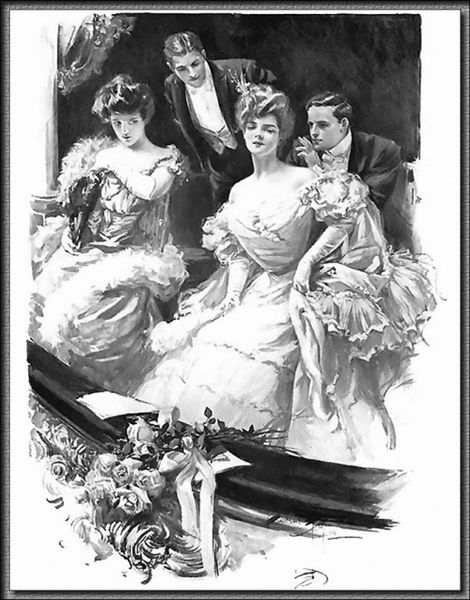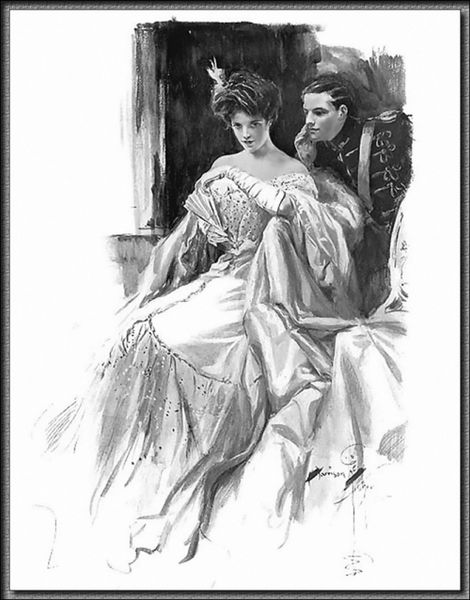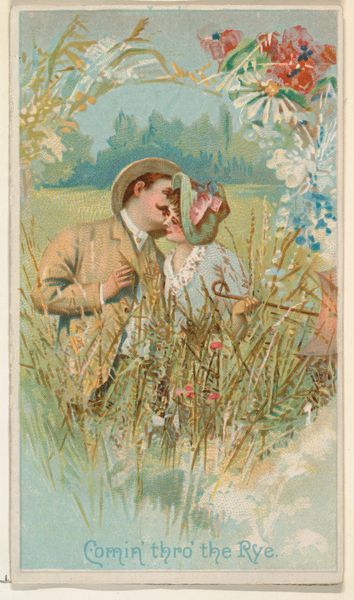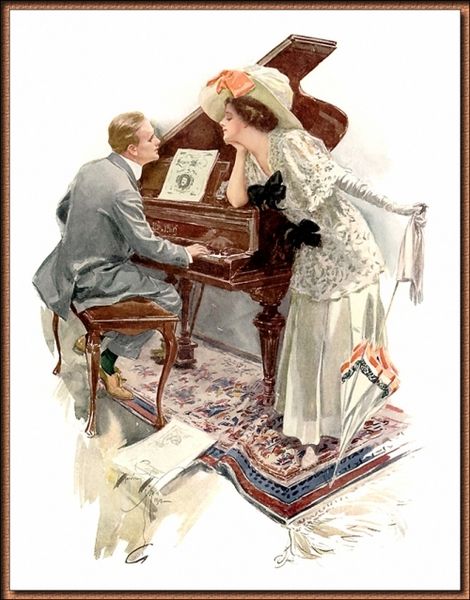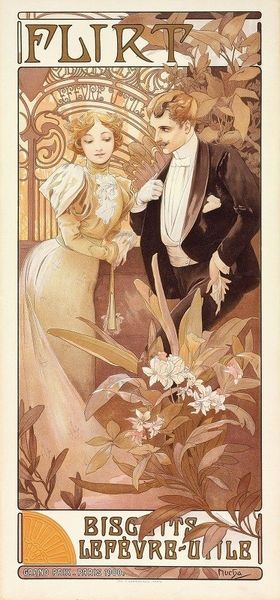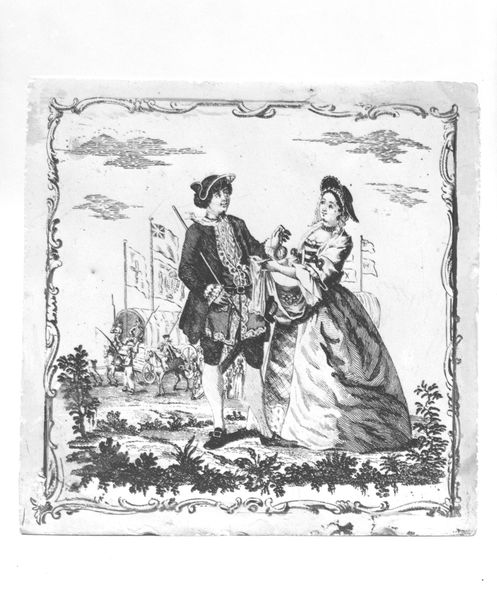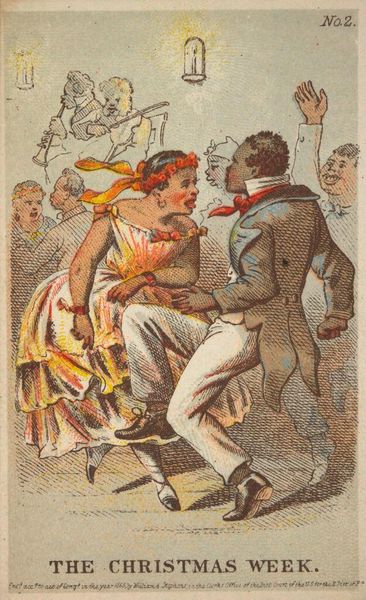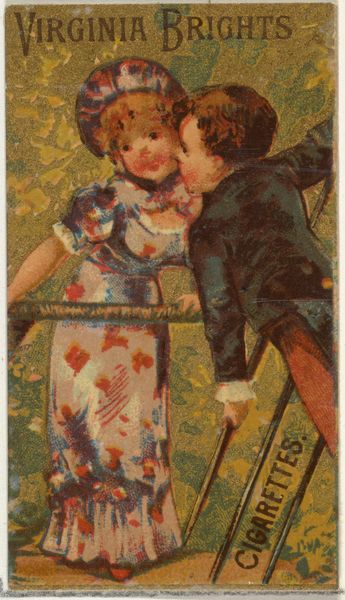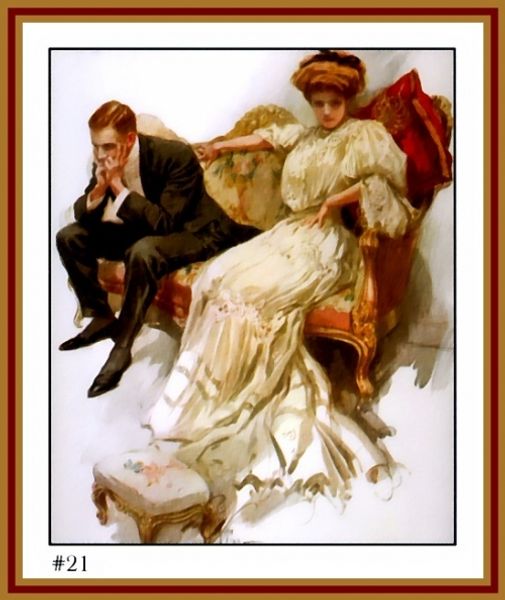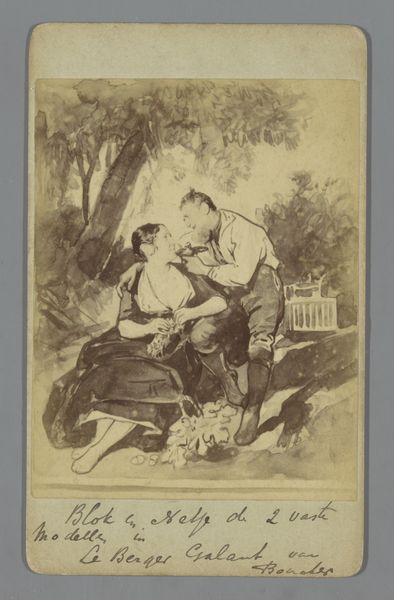
drawing, paper, photography, ink
#
portrait
#
drawing
#
figuration
#
paper
#
photography
#
ink
#
intimism
#
romanticism
#
surrealism
#
genre-painting
Copyright: Public domain
Curator: This ink drawing on paper by Harrison Fisher captures a romantic moment, a fleeting interaction almost suspended in time. It's simply called "Untitled." Editor: It has this hazy, dreamlike quality about it, doesn't it? The whole scene feels soft, like a half-remembered summer afternoon. Almost as if it were tinted sepia tones even though it's not. Curator: Fisher was popular for his depictions of what was termed the "American Girl," so while “Untitled,” these images presented ideal femininity for his audiences at the turn of the 20th Century, a type of aspirational figure to which one could attempt to measure oneself. Editor: I feel a touch of sadness there. It is there in the way she’s posed—confident perhaps, but also with a tinge of melancholic contemplation. You almost get the sense this exchange will linger longer for her. Curator: Gender roles were changing and solidifying then; the “American Girl” became shorthand for debates around education, employment and even political activism amongst white, middle-class women. These images reflect societal hopes and also the anxieties of the era, a public dialogue captured by many artists and illustrators of the period. Editor: It feels less like he’s simply showing a perfect vision, and more like capturing a nuanced human emotion in its nascent stage. So, in a way, he gives it depth beyond pretty portraits. Curator: Exactly. What seems sentimental is very much rooted in social discourse about class, race and gender at a pivotal point in American history. It offers insights into cultural expectations, public identities and image construction of the period. Editor: So much more than just ink on paper; the social context gives those lines their meaning and gives dimension to a scene that seemed superficially picturesque. Curator: Precisely, it reminds us art is always speaking to the world around it.
Comments
No comments
Be the first to comment and join the conversation on the ultimate creative platform.
